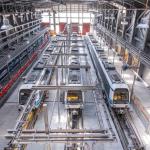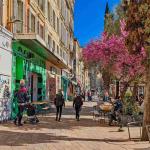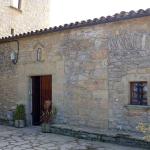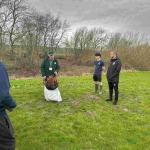Thessaloniki gets ready for its metro launch in November
The underground rapid transit lines have been under construction for almost two decades due to various project delays
 TheMayor.EU logo
TheMayor.EU logo 
The underground rapid transit lines have been under construction for almost two decades due to various project delays

The cross pinnacle on the Tower of Jesus Christ will be ready to receive visitors in 2026 on the centennial of Gaudi’s death

Now you can get your wine in Talence by paying directly in Bitcoin

That’s because the state has to spend money on updating the railway infrastructure rather than subsidizing the cost of the popular pass

Steffen Romstöck said that he would respect the residents’ choice and would take over the helm of the municipality, even if he didn’t run

The measure, which will come into force from 1 January 2025, will be partial and temporary…for now

Rethinking renewable energy sources for the urban landscape

But operating them is still illegal under the country’s legislation

The examples, compiled by Beyond Fossil Fuels, can inform and inspire communities and entrepreneurs that still feel trepidation at the prospect of energy transition

Now you can get your wine in Talence by paying directly in Bitcoin

Rethinking renewable energy sources for the urban landscape

The examples, compiled by Beyond Fossil Fuels, can inform and inspire communities and entrepreneurs that still feel trepidation at the prospect of energy transition

The underground rapid transit lines have been under construction for almost two decades due to various project delays

Plus, it has a unique modular design that allows it to be shortened and lengthened like a train

At least, that’s the promise made by the mayor of Paris, Anne Hidalgo

Despite its church-y name, the district has long been known as the hangout spot for the artsy crowds

At least, that’s the promise made by the mayor of Paris, Anne Hidalgo

Hostal de Pinós is located in the geographical centre of the autonomous region

On the eve of the new academic year, the ranking considers several distinct but essential factors


Following a successful trial phase, these quiet areas will now be available on all main routes in the country

The academic institution shows a deeper understanding of the well-being of its students











Historical sources reveal that the name Grosuplje was first mentioned in written documents in 1136 as Groslupp.
The Slovenian town developed into a truly important road and railway junction in the XIX century – with the creation of the the road link between Krka Valley and Žužemberk in 1869.
The railway line Ljubljana - Kočevje was built through Grosuplje in 1893, and one year later the first train ride from Ljubljana to Novo mesto took place through the city. The railway brought about rapid development to the area. People from the surrounding settlements began to visit the local pubs, and shops that were reselling the goods and market surpluses of the surrounding farmers.
The local people were mostly farmers, carters, millers, and they dealt in the leather and brick industry. Near Šmarje they also cultivated flax and hemp.
After World War II, the village began to spread rapidly and developed into an economic and administrative centre, but also into the centre in the very physical meaning of the word, since most of the country’s communication network flows into Grosuplje.
Grosuplje is a municipality located in central Slovenia. The seat of the municipality is the town of Grosuplje. It lies just south of the capital Ljubljana in the region of Lower Carniola.
Grosuplje is known for its developed craft and industry. It is a city, which is only a twenty-minute drive from Ljubljana and along the highway towards Zagreb.

Grosuplje is known primarily for its rich cultural and historical heritage, and natural beauties. Active tourism is also well connected with green tourism, especially with the regulation of three-lane trails and walking, hiking and biking trails.
The most popular natural and cultural sights are: the cave of Županova Jama (Mayor’s cave), the karstic site of Radensko Polje, Tabor Cerovo and Magdalenska Gora.